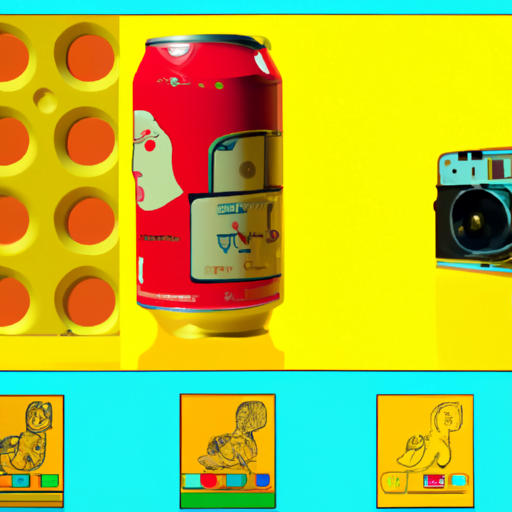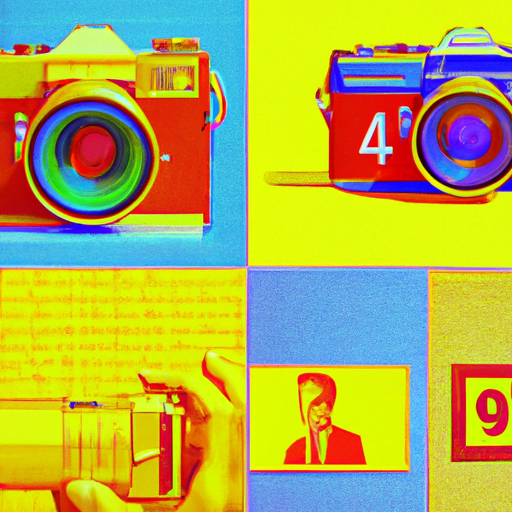
-
Table of Contents
The Impact of Social Media on Graphic Design Innovation

In today’s digital age, social media has become an integral part of our lives. It has revolutionized the way we communicate, share information, and connect with others. One industry that has been significantly impacted by the rise of social media is graphic design. Social media platforms have not only provided graphic designers with new avenues to showcase their work but have also influenced the way they create and innovate. In this article, we will explore the various ways in which social media has impacted graphic design innovation.
1. Increased Exposure and Reach
Social media platforms such as Instagram, Facebook, and Pinterest have provided graphic designers with a global platform to showcase their work. Previously, designers had to rely on traditional methods such as portfolio websites or physical portfolios to display their designs. However, with the advent of social media, designers can now reach a much larger audience and gain exposure to potential clients and collaborators from all over the world.
For example, Instagram has become a popular platform for graphic designers to share their work. By using relevant hashtags and engaging with the design community, designers can attract a large following and gain recognition for their work. This increased exposure has opened up new opportunities for designers to collaborate with brands, agencies, and other creatives.
2. Inspiration and Collaboration
Social media platforms have become a treasure trove of inspiration for graphic designers. Platforms like Pinterest and Behance allow designers to discover new trends, styles, and techniques from other designers around the world. This constant exposure to new ideas and creative work fuels innovation and pushes designers to think outside the box.
Moreover, social media has made collaboration easier than ever before. Designers can connect with each other, share ideas, and even work on projects together regardless of their geographical location. This has led to the emergence of online design communities where designers can seek feedback, learn from each other, and collaborate on projects.
3. Real-Time Feedback and Iteration
Social media platforms enable designers to receive instant feedback on their work. They can share their designs with their followers and receive comments, likes, and shares in real-time. This immediate feedback loop allows designers to iterate and improve their designs based on the reactions and suggestions of their audience.
For example, a graphic designer can post a logo design on Instagram and receive feedback from hundreds or even thousands of people within minutes. This feedback can be invaluable in refining the design and making it more effective. In the past, designers had to rely on focus groups or client feedback, which could be time-consuming and limited in scope.
4. Trend Identification and Adaptation
Social media platforms serve as a barometer for design trends. By observing the content that is popular and trending on social media, designers can stay up-to-date with the latest design styles and adapt their work accordingly. This helps them stay relevant and appeal to their target audience.
For instance, if a particular color palette or typography style is gaining traction on social media, designers can incorporate those elements into their designs to resonate with their audience. This ability to quickly identify and adapt to trends has become crucial in the fast-paced world of graphic design.
5. Enhanced Client Communication
Social media has also transformed the way graphic designers communicate with their clients. Platforms like Facebook and LinkedIn provide a more informal and accessible channel for designers to interact with their clients. This allows for more frequent and efficient communication, leading to better project outcomes.
Additionally, social media platforms enable designers to showcase their design process and behind-the-scenes work. By sharing sketches, mood boards, and design iterations, designers can involve their clients in the creative process and ensure that their vision aligns with the client’s expectations.
6. Democratization of Design Education
Social media has democratized design education by making it more accessible to aspiring designers. Platforms like YouTube and Instagram are filled with tutorials, tips, and resources shared by experienced designers. This wealth of knowledge allows aspiring designers to learn new skills, techniques, and software without the need for formal education.
Furthermore, social media has also provided a platform for designers to share their design process and insights. By documenting their work and sharing it with the design community, experienced designers can inspire and mentor the next generation of designers.
Conclusion
Social media has had a profound impact on graphic design innovation. It has provided designers with increased exposure, inspiration, and collaboration opportunities. The real-time feedback and trend identification capabilities of social media have also fueled design iteration and adaptation. Additionally, social media has enhanced client communication and democratized design education. As social media continues to evolve, it will undoubtedly continue to shape and influence the future of graphic design innovation.
